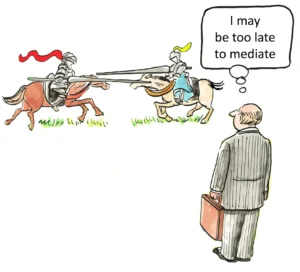Probable Cause: Standard for Arrests and Searches
The concept of probable cause stands as a fundamental pillar of the American criminal justice system, serving as the constitutional threshold for lawful arrests, searches, and seizures. Enshrined in the Fourth Amendment to the United States Constitution, probable cause acts as a safeguard against arbitrary government intrusion into the lives of citizens. This legal standard requires law enforcement officials to possess sufficient evidence or information that would lead a reasonable person to believe that a crime has been, is being, or is about to be committed before they can make an arrest or conduct a search.
The origins of probable cause can be traced back to English common law, but its modern interpretation and application have been shaped by centuries of American jurisprudence. The Supreme Court has consistently held that probable cause is a flexible, common-sense standard that depends on the totality of the circumstances. In Illinois v. Gates (1983), the Court emphasized that probable cause is a practical, non-technical conception that deals with the factual and practical considerations of everyday life on which reasonable and prudent men, not legal technicians, act.
The importance of probable cause in protecting individual rights cannot be overstated. It serves as a crucial check on police power, ensuring that law enforcement actions are based on more than mere suspicion or hunches. By requiring a reasonable basis for arrests and searches, probable cause helps maintain the delicate balance between effective law enforcement and the preservation of civil liberties.
In the context of arrests, probable cause requires that officers have sufficient facts or evidence to believe that the person to be arrested has committed a crime. This standard applies to both warrantless arrests and those made pursuant to an arrest warrant. For warrantless arrests in public places, the Supreme Court has held that probable cause alone is sufficient, without the need for a warrant. However, to make an arrest inside a person’s home, absent exigent circumstances or consent, officers must obtain an arrest warrant based on probable cause.
The determination of probable cause for an arrest involves a careful evaluation of the facts known to the officer at the time of the arrest. These facts may include direct observations, information from reliable informants, physical evidence, or a combination of factors that, when viewed together, support a reasonable belief in the suspect’s guilt. It is important to note that probable cause does not require certainty or even a preponderance of evidence; rather, it demands a fair probability that criminal activity has occurred.
In the realm of searches and seizures, probable cause plays an equally critical role. The Fourth Amendment explicitly states that “no Warrants shall issue, but upon probable cause, supported by Oath or affirmation, and particularly describing the place to be searched, and the persons or things to be seized.” This requirement ensures that searches are not conducted arbitrarily or based on vague suspicions.
To obtain a search warrant, law enforcement officers must present an affidavit to a neutral magistrate detailing the facts and circumstances that establish probable cause. The magistrate must then make an independent determination of whether probable cause exists. This process serves as a crucial check on police power, interposing a neutral arbiter between the zealous officer and the citizen.
While the warrant requirement is the general rule, the Supreme Court has recognized several exceptions where searches may be conducted without a warrant, provided probable cause exists. These exceptions include exigent circumstances, searches incident to arrest, and certain automobile searches. In each of these cases, the presence of probable cause remains a prerequisite for the search to be considered constitutional.
The standard for probable cause in search cases is similar to that for arrests: there must be a fair probability that contraband or evidence of a crime will be found in a particular place. This standard allows for some flexibility, recognizing that law enforcement often must act on incomplete information. However, it still requires more than a mere hunch or generalized suspicion.
One of the most significant developments in the application of probable cause has been its extension to electronic surveillance and searches of digital devices. As technology has advanced, courts have grappled with how to apply traditional Fourth Amendment principles to new forms of communication and data storage. In cases involving cell phone searches, for example, the Supreme Court has recognized the vast amount of personal information contained in these devices and has generally required officers to obtain a warrant based on probable cause before searching their contents.
The concept of probable cause also intersects with other important legal doctrines, such as the exclusionary rule. This rule, developed by the Supreme Court as a means of enforcing Fourth Amendment rights, provides that evidence obtained in violation of the Constitution cannot be used against a defendant at trial. Thus, if an arrest or search is conducted without probable cause, any evidence obtained as a result may be suppressed. This powerful deterrent helps ensure that law enforcement agencies take the probable cause requirement seriously.
In recent years, there has been increased scrutiny of how probable cause determinations are made, particularly in the context of racial profiling and bias in policing. Critics argue that the subjective nature of probable cause assessments can allow for the influence of implicit biases, leading to disproportionate stops, searches, and arrests of minority individuals. This ongoing debate highlights the need for continued examination and refinement of how probable cause is applied in practice.
The standard of probable cause also plays a crucial role in grand jury proceedings. Grand juries use the probable cause standard to determine whether to issue an indictment against a suspect. This process serves as an important check on prosecutorial power, ensuring that criminal charges are not brought without sufficient evidence to justify a trial.
In the context of administrative searches, such as health and safety inspections, the Supreme Court has recognized a modified probable cause standard. For these types of searches, which are typically less intrusive and serve a different purpose than criminal investigations, the Court has held that probable cause can be established by a showing of specific evidence of an existing violation or by demonstrating that reasonable legislative or administrative standards for conducting an inspection are satisfied with respect to a particular establishment.
The application of probable cause to border searches presents unique challenges. The Supreme Court has long recognized that the government has broad authority to conduct searches at international borders without a warrant or probable cause. This “border search exception” is based on the sovereign’s right to protect its territorial integrity. However, as technology has advanced and the amount of personal information carried by travelers has increased, there have been calls for reevaluating the scope of this exception, particularly for searches of electronic devices.
In the realm of traffic stops, probable cause intersects with the related concept of reasonable suspicion. While a full search of a vehicle generally requires probable cause, the Supreme Court has held that officers may stop a vehicle based on reasonable suspicion of criminal activity, a lower standard than probable cause. However, any subsequent search of the vehicle or its occupants must be supported by probable cause or fall under one of the recognized exceptions to the warrant requirement.
The standard of probable cause also applies to seizures of property. Law enforcement must have probable cause to believe that property is contraband or evidence of a crime before seizing it. This requirement is particularly important in the context of civil asset forfeiture, where the government can seize property suspected of being connected to criminal activity, even if the owner is not charged with a crime.
In recent years, there has been increased attention to the role of technology in establishing probable cause. The use of predictive policing algorithms, facial recognition software, and other advanced technologies has raised questions about how these tools should be factored into probable cause determinations. Courts are grappling with issues such as the reliability of these technologies and the potential for built-in biases that could affect probable cause assessments.
The concept of probable cause also intersects with national security concerns. In cases involving terrorism or threats to national security, there has been debate about whether the traditional probable cause standard should be modified or if different standards should apply. The Foreign Intelligence Surveillance Act (FISA), for example, allows for surveillance of foreign powers or their agents based on probable cause that the target is a foreign power or agent of a foreign power, rather than probable cause of criminal activity.
In the context of drug enforcement, probable cause determinations often rely heavily on the observations and expertise of law enforcement officers. Courts have recognized that officers can use their training and experience to interpret seemingly innocent behavior as indicative of drug activity. However, this deference to officer expertise has been criticized for potentially allowing subjective judgments to masquerade as objective probable cause determinations.
The standard of probable cause also applies to arrests and searches conducted by private citizens. While the Fourth Amendment generally only applies to government actions, many states have laws allowing for citizen’s arrests under certain circumstances. These laws typically require that the private citizen have probable cause to believe that a felony has been committed or that a misdemeanor amounting to a breach of the peace is being committed in their presence.
In the digital age, the concept of probable cause has had to adapt to new forms of electronic evidence. For example, the use of cell site location information (CSLI) to track a suspect’s movements has raised questions about when accessing this data constitutes a search requiring probable cause. In Carpenter v. United States (2018), the Supreme Court held that accessing historical CSLI constitutes a search under the Fourth Amendment, generally requiring a warrant supported by probable cause.
The intersection of probable cause and mental health considerations has become increasingly important in recent years. When responding to situations involving individuals with mental health issues, law enforcement officers must carefully assess whether probable cause exists for an arrest or if the situation is better handled through mental health interventions. This has led to increased training for officers in recognizing and responding to mental health crises.
In the context of school searches, the Supreme Court has recognized a modified standard for probable cause. In New Jersey v. T.L.O. (1985), the Court held that school officials need only reasonable suspicion, rather than probable cause, to search a student. This lower standard reflects the unique needs of the school environment and the reduced expectation of privacy that students have while at school.
The concept of probable cause also plays a role in immigration enforcement. While the Fourth Amendment applies to all persons within the United States, regardless of immigration status, there are some unique considerations in the immigration context. For example, in United States v. Brignoni-Ponce (1975), the Supreme Court held that Border Patrol agents on roving patrol may stop vehicles only if they have reasonable suspicion that the vehicle contains aliens who may be illegally in the country.
In the realm of cybercrime investigations, establishing probable cause can be particularly challenging. The anonymous nature of many online activities and the technical complexity of digital evidence can make it difficult for law enforcement to articulate the specific facts necessary to support a probable cause determination. This has led to ongoing debates about the appropriate standards for obtaining warrants for digital searches and seizures.
The standard of probable cause also intersects with issues of police accountability. Body-worn cameras and other recording devices have provided new sources of evidence that can be used to evaluate whether probable cause existed for a particular arrest or search. This increased transparency has the potential to improve the accuracy of probable cause determinations and enhance public trust in law enforcement actions.
In conclusion, the concept of probable cause remains a cornerstone of American criminal procedure, serving as a crucial safeguard against unreasonable government intrusion into individual privacy. As technology advances and society evolves, the application of probable cause will continue to be refined and debated. The challenge for courts and lawmakers will be to maintain the delicate balance between effective law enforcement and the protection of civil liberties, ensuring that the probable cause standard remains a meaningful check on government power while allowing for the flexibility needed to address modern criminal justice challenges.
Website citations used for this article:
- https://www.law.cornell.edu/wex/probable_cause
- https://constitution.congress.gov/browse/essay/amdt4-3-1/ALDE_00013715/
- https://www.aclu.org/cases/digital-age-warrants
- https://www.hashemilaw.com/understanding-probable-cause-in-california-key-legal-scenarios-and-your-rights/
- https://www.armfor.uscourts.gov/digest/IB13.htm
- https://www.brookings.edu/articles/police-surveillance-and-facial-recognition-why-data-privacy-is-an-imperative-for-communities-of-color/
- https://constitution.congress.gov/browse/essay/amdt4-3-7/ALDE_00000781/
- https://www.findlaw.com/criminal/criminal-rights/probable-cause.html
- https://en.wikipedia.org/wiki/Probable_cause
- https://papers.ssrn.com/sol3/papers.cfm?abstract_id=1594261
- https://constitution.congress.gov/browse/essay/amdt4-3-1/ALDE_00013715/
- https://www.aclu.org/cases/digital-age-warrants
- https://www.hashemilaw.com/understanding-probable-cause-in-california-key-legal-scenarios-and-your-rights/


















